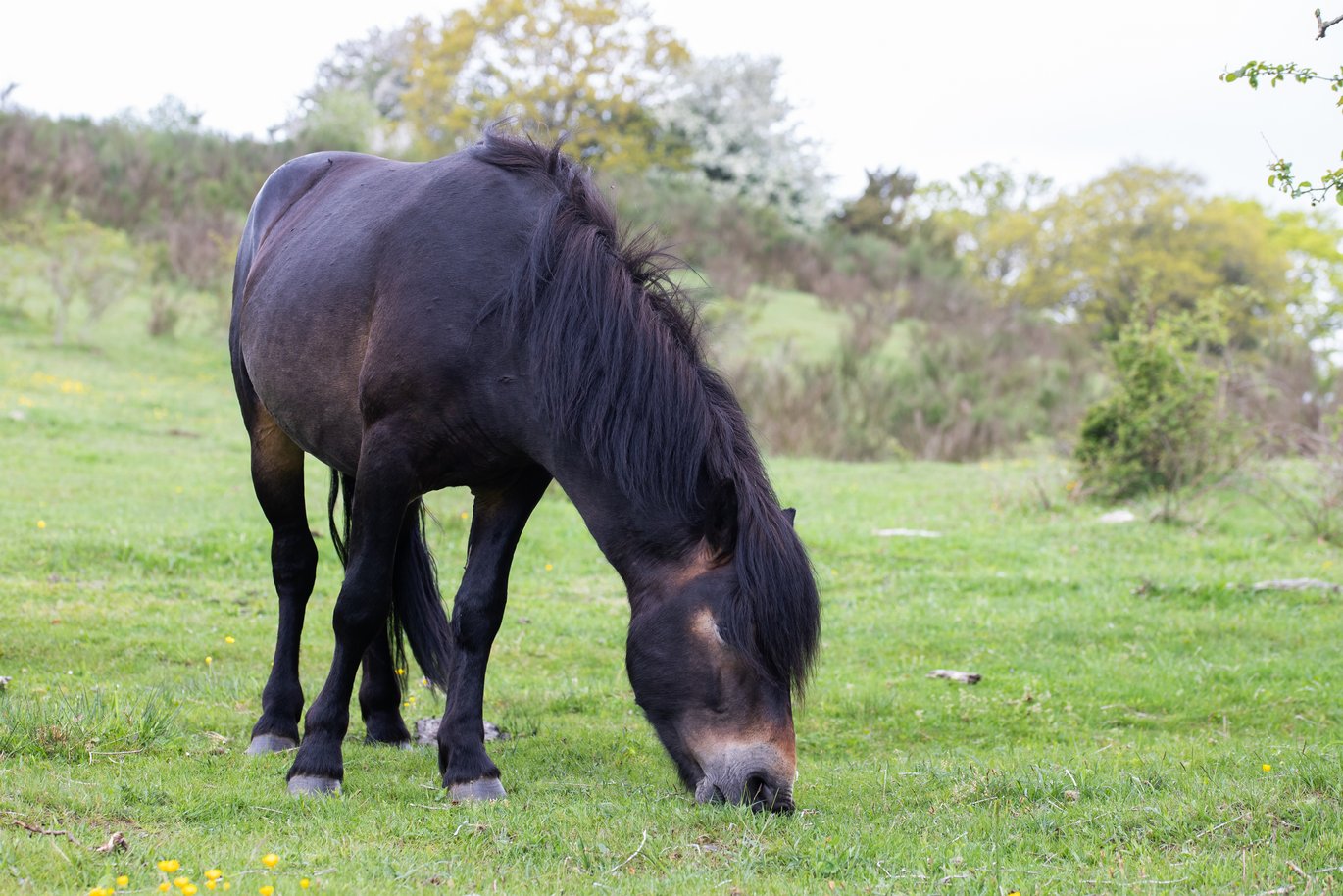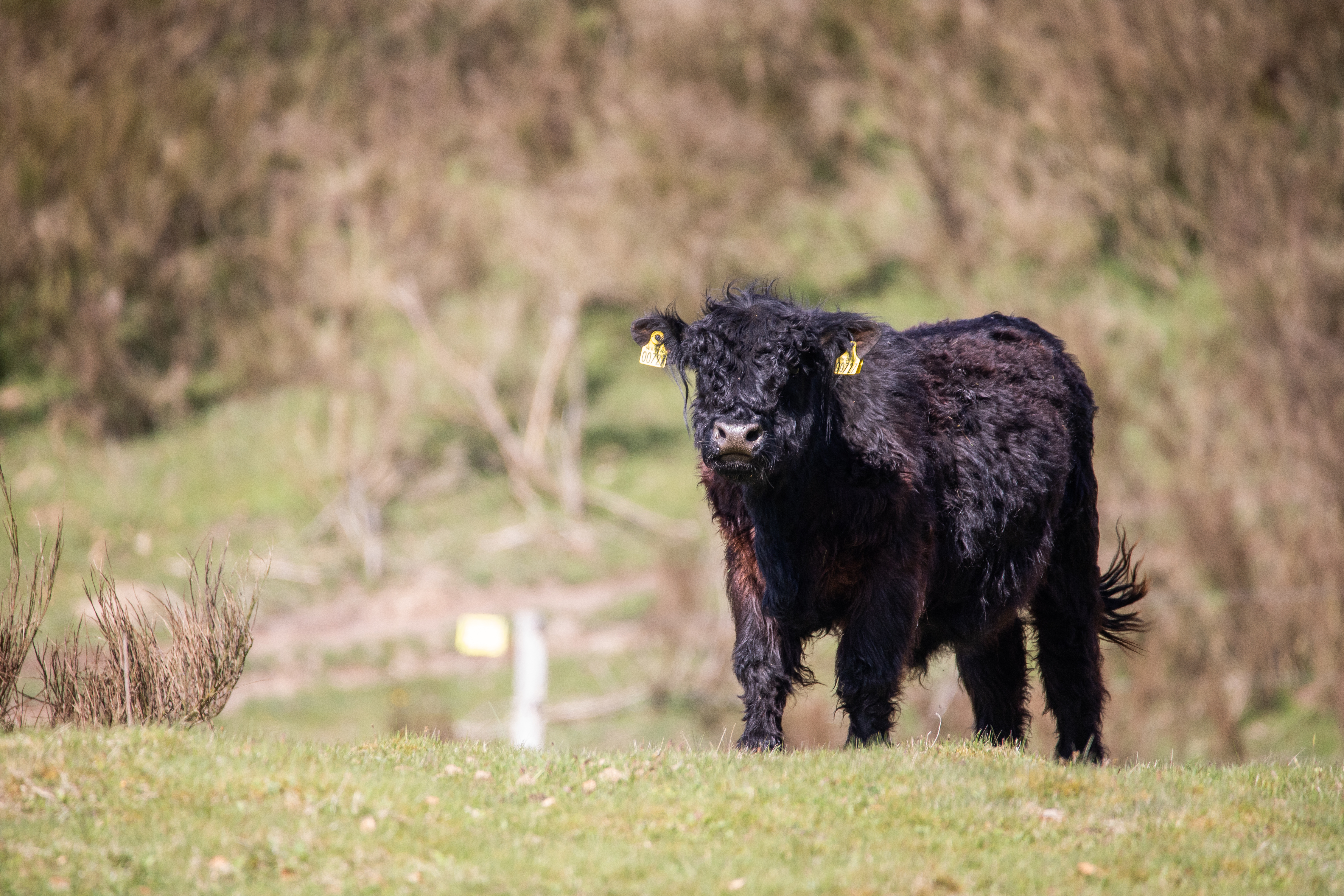New DNA study describes the dietary habits of wild horses and cattle in Mols Bjerge
Researchers from Aarhus University and the Museum of Natural History have spent a year collecting and analysing environmental DNA from horse droppings and cow pats in Mols Bjerge to see how the diets of feral horses and cattle change with the seasons. It turns out that feral horses have a very varied diet throughout the year, while feral cattle narrow their menu in the winter.


To be precise, the horse dung and cow pats came from the wild Galloway cattle and Exmoor ponies that wander in the Mols Laboratory's 120-hectare enclosure in Mols Bjerge.
Since 2016, the large herbivores have formed a significant element in the museum's trophic rewilding project (see Fact Box), and for this reason they are not fed any supplements, but must cover their energy needs with the food they forage themselves from the area.
In the new study, the researchers have described how the two species complement each other with regard to recreating the natural processes that have to be in place to support a high level of biodiversity in the area.
And horses and cattle do complement each other:
The horses eat varied diets throughout the year, so their summer menu consists of grasses and herbs as well as trees and bushes such as oak, broom and blackberry bushes, while there are grasses, trees and bushes on their winter menu.
In contrast, the cattle have less varied diets in the winter than in the summer. For example, they eat mostly clover, plantain and other herbs in the summer, and are particularly fond of blackberry bushes during the cold months.
"So in the context of plant variation, cattle may have a greater effect on very competitive and nutrient-rich plants such as blackberries, while horses are likely to play a bigger role in keeping trees and grasses in check," says Emil Ellegaard Thomassen. He is a PhD student at the Department of Biology at Aarhus University and the first author of the study, which has just been published in the scientific journal Molecular Ecology.
A real eye-opener
The DNA samples also show major differences in the species of insects and roundworms that live in – and from – the dung from the horses and cattle, respectively. The researchers found many species of insects that only live in dung from one of the two herbivores, illustrating the different insects’ preferences for different types of dung.
Kent Olsen, who is head of research at the Museum of Natural History and co-author of the study, explains that the results of the environmental DNA method have been a real eye-opener.
"We see what the animals eat on a daily basis, and we have recorded that horses are particularly fond of trees and bushes in the winter, but now the study shows that they eat plants such as heather, broom and oak all year round – even when grass and flowering herbs are in full bloom and growing up to their knees," he says.
Kent Olsen adds that the environmental DNA does not tell the whole story; it does not show the exact source the DNA comes from. DNA from oak could therefore originate from oak leaves, oak branches or acorns, so the method has to be combined with observations in the field to gain a full understanding of their ecological significance.
"But the method gives a super-efficient snapshot of the state of functional diversity in our ecosystems," he says.
Perspectives for nature management
Associate Professor Philip Francis Thomsen from the Department of Biology at Aarhus University has been working with environmental DNA and biodiversity for more than a decade, and he is the senior author of the study. He sees the new study as a good example of the perspectives in the environmental DNA method within nature management.
"The results are very important for the future management of natural areas with rewilding, and can help us learn more about which animals we should choose and the effects that our choices will have on biodiversity," says Associate Professor Philip Francis Thomsen.
"But we need more studies at other locations before we can generalise the findings," he adds.
Fact box
♦ Trophic rewilding in this context means the use of large herbivorous mammals that, when foraging for food and trudging on the soil, generate a cascade effect which spreads down through the various levels in the food chains of the ecosystems (trophic levels).
♦ Every month throughout 2020, samples were taken of ten cow pats and ten horse droppings in the area – half from each species in light open landscapes, and half in areas covered by woods or scrub.
♦ The researchers have studied the environmental DNA from the samples to determine what the animals had eaten (they found DNA from 133 plant genera), and which species of insects and roundworms lived in – and from – the dung (they found DNA from at least 117 species of beetles and flies and 24 species of roundworms).
Additional information | |
| We strive to ensure that all our articles live up to the Danish universities' principles for good research communication(scroll down to find the English version on the web-site). Because of this the article will be supplemented with the following information: | |
| Funding | Carlsberg Foundation |
| Link to the scientific article "Contrasting seasonal patterns in diet and dung-associated invertebrates of feral cattle and horses in a rewilding area" | https://onlinelibrary.wiley.com/doi/10.1111/mec.16847 |
| Contact | Emil Ellegaard Thomassen, Philip Francis Thomsen Kent Olsen |
